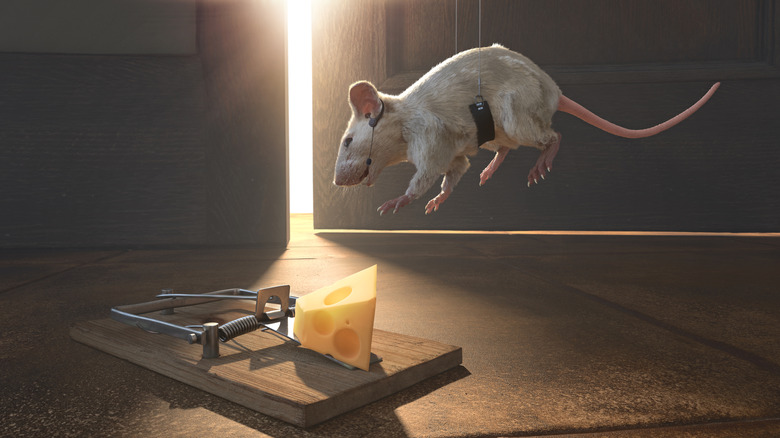
With an exceptional sense of smell, mice can discover food by simply following their noses. They are particularly drawn to fatty and sweet foods, meaning even candles and soap with such scents can lure them into your home. Once mice have infiltrated your house, eliminating them can be challenging. Deploying traps is a common method to address this issue, but at times, it seems as if mice possess spy-like skills to evade capture. In truth, the very sense of smell that attracts them to their favorite foods also serves as a secret weapon against traps.
One method mice use their olfactory senses to avoid traps is by detecting human scent. As they’ve been hiding in your home, they’re familiar with your scent and those of everyone else residing there. Consequently, they will steer clear of any trap that carries your scent. If you don’t use gloves while setting and placing traps, mice will avoid them due to their fear of humans. Another way the scent betrays traps is if they smell like other deceased mice. This is why you should regularly check the traps you’ve set and remove any dead mice. If you’re uncomfortable cleaning them to eliminate any lingering scent, consider setting new ones in their place.
The natural behaviors of mice help them avoid traps, too

Avoiding traps also has much to do with the behaviors of mice. Mice are social creatures living in communities, and their adaptability allows them to thrive both outdoors and indoors. However, despite their curiosity, mice are more intelligent than one might assume. This intelligence is evident in their tendency to dart through your house with one side against the wall, often allowing them to easily evade traps not placed directly in their path.
Another reason mice can avoid traps is their cautious nature, especially while feeding. Being on high alert enables them to quickly escape even after triggering a spring trap. Sometimes, they nibble so lightly on the bait that the trigger doesn’t spring into action. To counter this, traps can be grouped to increase the chance of catching a mouse.
Tips for setting and placing snap traps for mice

While rodents and vermin can sometimes avoid spring traps, there are ways to enhance your chances of capturing them. Start by selecting the right bait, such as sweet, high-fat, high-protein, and strong-smelling foods. Bacon’s high-fat content and potent aroma are attractive to these creatures, as are certain cheeses. Chocolate is another excellent option due to its sweet taste and strong smell, while dried fruits offer sweetness and a chewy texture. Tree nuts, especially almonds and hazelnuts, are also effective due to their high protein content and strong fragrance.
Once you’ve chosen your bait, avoid using excessive amounts. Too much bait on a snap trap can be conspicuous, particularly when mice are being cautious. Instead, place small, pea-sized portions in various locations. A common mistake people make is spreading traps too widely. Optimal locations are against baseboards and walls where rodents frequently travel. Other strategic spots include behind appliances, under furniture, in dark corners, and near nests, identifiable by chew marks and droppings.
Remember to place traps out of reach of children and pets for safety. Since it may take a few days for traps to be effective, it’s advisable to monitor them and reset with fresh bait as needed.
“`






